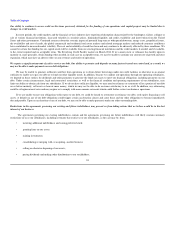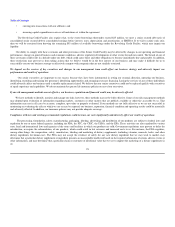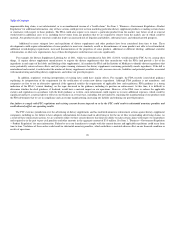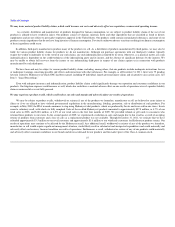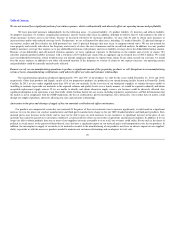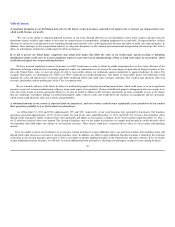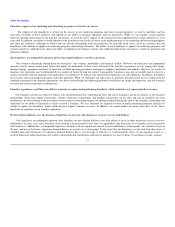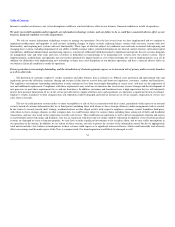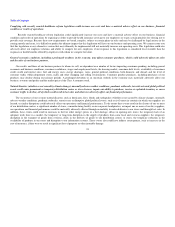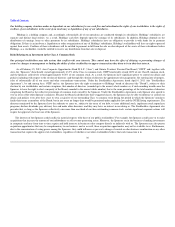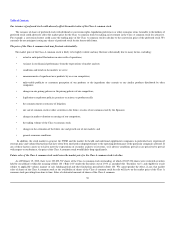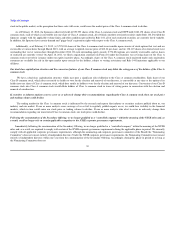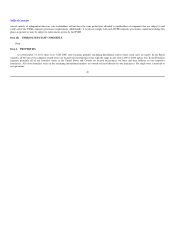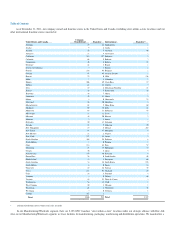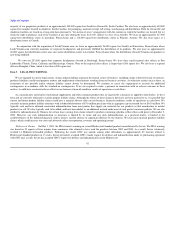GNC 2012 Annual Report Download - page 36
Download and view the complete annual report
Please find page 36 of the 2012 GNC annual report below. You can navigate through the pages in the report by either clicking on the pages listed below, or by using the keyword search tool below to find specific information within the annual report.
Table of Contents
Internet to conduct our business, any system disruptions could have a material adverse effect on our business, financial condition or results of operations.
We must successfully maintain and/or upgrade our information technology systems, and our failure to do so could have a material adverse effect on our
business, financial condition or results of operations.
We rely on various information technology systems to manage our operations. Over the last several years we have implemented and we continue to
implement modifications and upgrades to such systems, including changes to legacy systems, replacing legacy systems with successor systems with new
functionality, and acquiring new systems with new functionality. These types of activities subject us to inherent costs and risks associated with replacing and
changing these systems, including impairment of our ability to fulfill customer orders, potential disruption of our internal control structure, substantial capital
expenditures, additional administration and operating expenses, retention of sufficiently skilled personnel to implement and operate the new systems, demands
on management time and other risks and costs of delays or difficulties in transitioning to or integrating new systems into our current systems. These
implementations, modifications and upgrades may not result in productivity improvements at a level that outweighs the costs of implementation, or at all. In
addition, the difficulties with implementing new technology systems may cause disruptions in our business operations and have a material adverse effect on
our business, financial condition or results of operations.
Privacy protection is increasingly demanding, and the introduction of electronic payment exposes us to increased risk of privacy and/or security breaches
as well as other risks.
The protection of customer, employee, vendor, franchisee and other business data is critical to us. Federal, state, provincial and international laws and
regulations govern the collection, retention, sharing and security of data that we receive from and about our employees, customers, vendors and franchisees.
The regulatory environment surrounding information security and privacy has been increasingly demanding in recent years, and may see the imposition of
new and additional requirements. Compliance with these requirements may result in cost increases due to necessary systems changes and the development of
new processes to meet these requirements by us and our franchisees. In addition, customers and franchisees have a high expectation that we will adequately
protect their personal information. If we or our service provider fail to comply with these laws and regulations or experience a significant breach of customer,
employee, vendor, franchisee or other company data, our reputation could be damaged and result in an increase in service charges, suspension of service, lost
sales, fines or lawsuits.
The use of credit payment systems makes us more susceptible to a risk of loss in connection with these issues, particularly with respect to an external
security breach of customer information that we or third parties (including those with whom we have strategic alliances) under arrangements with us control.
In the event of a security breach, theft, leakage, accidental release or other illegal activity with respect to employee, customer, vendor, franchisee third-party,
with whom we have strategic alliances or other company data, we could become subject to various claims, including those arising out of thefts and fraudulent
transactions, and may also result in the suspension of credit card services. This could harm our reputation as well as divert management attention and expose
us to potentially unreserved claims and litigation. Any loss in connection with these types of claims could be substantial. In addition, if our electronic payment
systems are damaged or cease to function properly, we may have to make significant investments to fix or replace them, and we may suffer interruptions in
our operations in the interim. In addition, we are reliant on these systems, not only to protect the security of the information stored, but also to appropriately
track and record data. Any failures or inadequacies in these systems could expose us to significant unreserved losses, which could materially and adversely
affect our earnings and the market price of the Class A common stock. Our brand reputation would likely be damaged as well.
34


